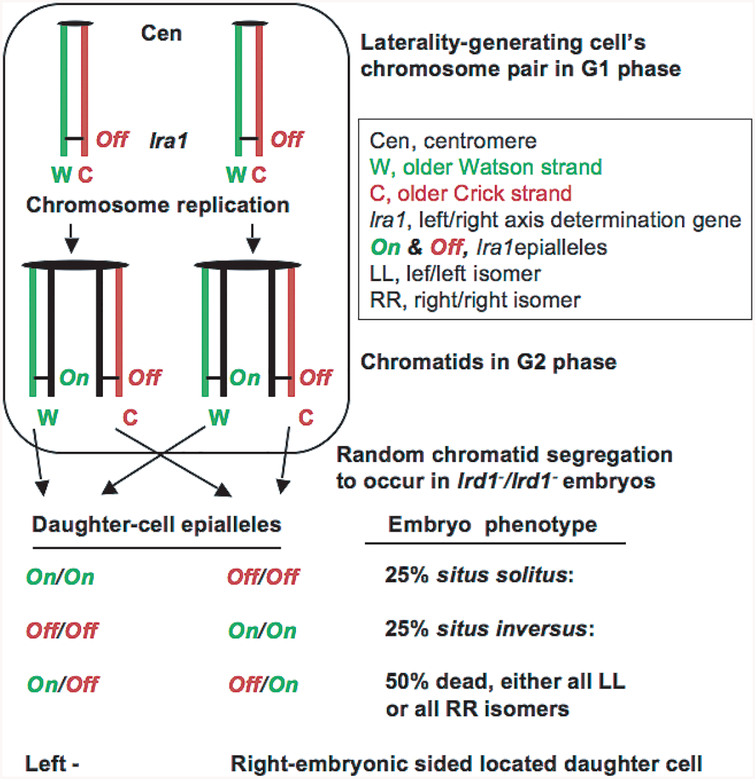Fig. 1.
Predictions of the Somatic Strand-specific Imprinting and selective chromatid Segregation (SSIS) model concerns lrd1−/lrd1− embryos’ phenotype. According to the model (Klar 1994), the laterality-generating cell contains a hypothetical left/right axis-determining (lra1) gene in both homologs of an unknown chromosome in the epigenetically silenced (Off) state (top). It suggests generation of nonequivalent sister chromatids of the chromosomes pair whereby DNA replication activates (On) the lra1 gene in the “older Watson” (W) strand-containing chromatid but it remains Off in the “older Crick” (C) strand-containing chromatid. Subsequently, the lrd1 gene-encoded LRD motor protein, by acting directly or indirectly through the centromere, promotes selective chromatid segregation. Consequently, both older W-containing chromatids are segregated to the daughter cell placed on the left side of the embryo that thereby becomes left-side-organs generating progenitor cell. As a result, both older C-containing chromatids are delivered to the other right-side-program generating progenitor daughter cell placed on the right side of the embryo. With reference to older strands and to simplify presentation, this is designated as the “WW:CC” segregation pattern [2]. Consequently, an asymmetric cell division results from asymmetric expression of the lra1 gene in sister cells when initially the embryonic asymmetry is determined. This causes all wild-type embryos to develop with normal situs. However, random chromatid segregation is predicted to occur in the lrd1−/lrd1− mutant; consequently, the predicted number and variety of epigenetic state combinations in embryos and their resulting visceral phenotypes are indicated at the bottom of the drawing (see text for detailed description of the phenotypes). DNA strands that normally exist in helix are represented as straight lines for clarity and are arbitrarily designated as W and C based on their 5’−3’ orientation. The older W strand in each chromatid is indicated in green colour, older C in red, and all “younger” strands synthesized in the most recent DNA replication cycle are coloured in black. The black arrows represent distribution of a specific strand/chromatid, along with the indicated lra1-epiallele, to specific daughter cell.

